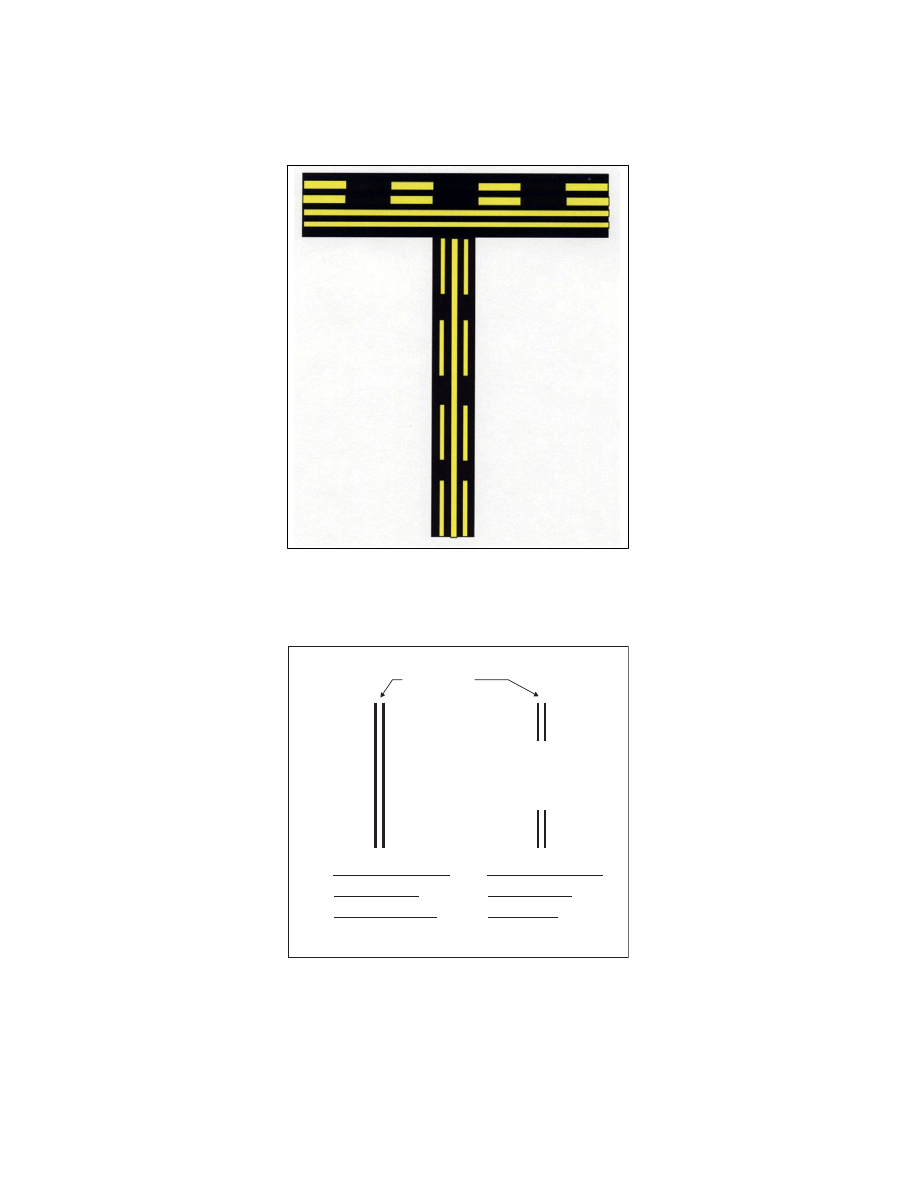
4/20/23
AIM
FIG 2
−
3
−
8
Enhanced Taxiway Centerline
FIG 2
−
3
−
9
Dashed Markings
DOUBLE
YELLOW
LINES
TAXIWAY EDGE
TAXIWAY EDGE
MARKINGS
MARKINGS
CONTINUOUS
DASHED
e. Surface Painted Taxiway Direction Signs.
Surface painted taxiway direction signs have a yellow
background with a black inscription, and are provided when it is not possible to provide taxiway direction signs
at intersections, or when necessary to supplement such signs. These markings are located adjacent to the
centerline with signs indicating turns to the left being on the left side of the taxiway centerline, and signs
indicating turns to the right being on the right side of the centerline. (See FIG 2
11.)
Airport Marking Aids and Signs
2
−
3
−
11